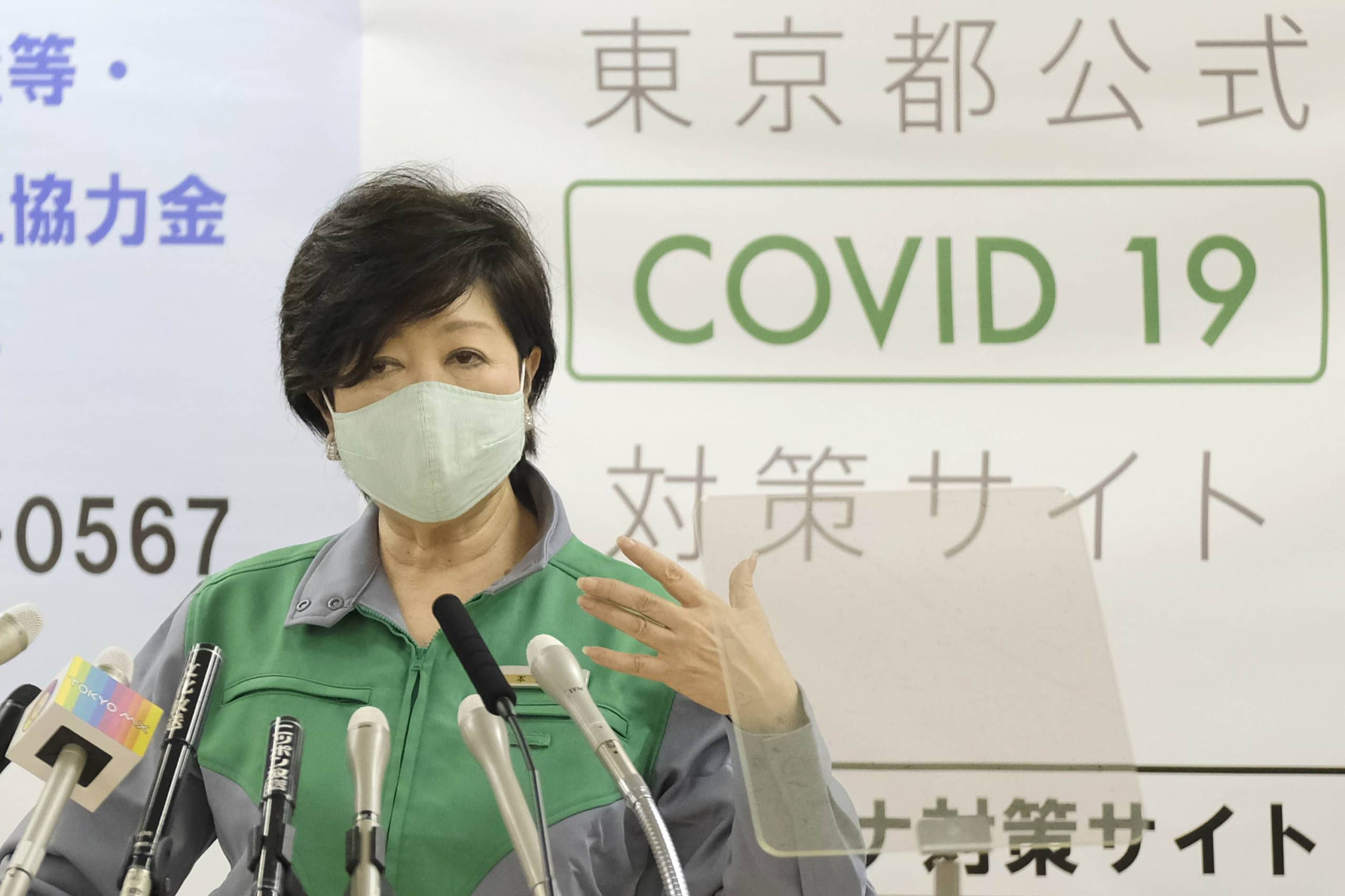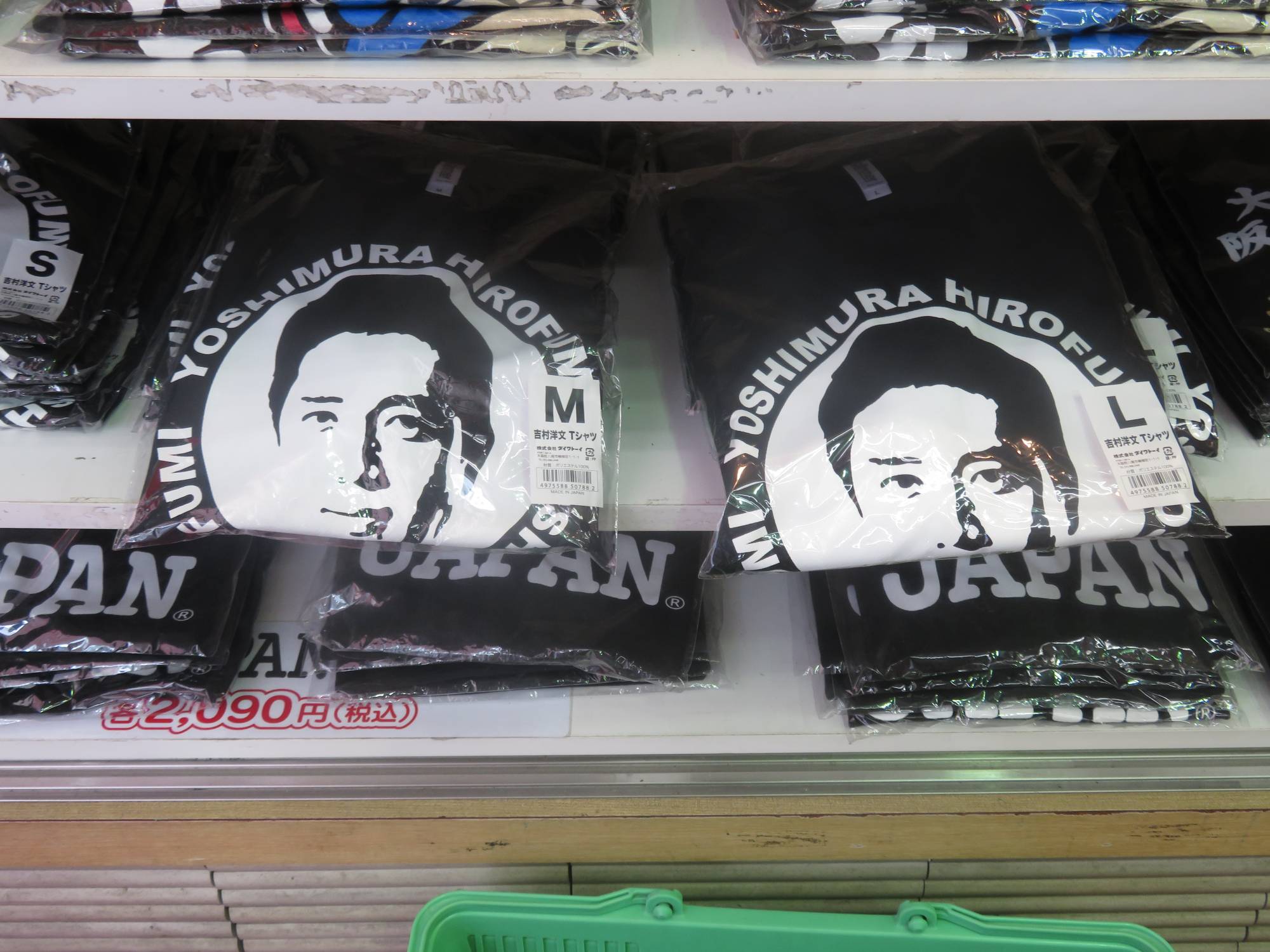OSAKA – Over the past three months, Tokyo Gov. Yuriko Koike and Osaka Gov. Hirofumi Yoshimura have found themselves in the national political and media spotlight as never before, due to their responses to the coronavirus. As Koike launches her re-election campaign, and as Yoshimura’s local political group Osaka Ishin no Kai (One Osaka) turned 10 years old in April, here’s a look at both local leaders, their similarities and differences, and their possible political futures.
Why are the two being compared with each other now?
Because of the way they have created, separately, policies to deal with local outbreaks of the coronavirus, and the ways they have sometimes challenged the national leadership’s handling of the outbreak.
Yoshimura’s creation of an “Osaka model,” a series of standards that the prefecture, not the central government, would use to judge whether to relax the request on local businesses to stay closed, was widely praised as being a balanced response that weighed concerns about the spread of the virus with worries about the economic damage caused by COVID-19 and the measures introduced to contain it.
Koike has also drawn praise for her response, though many of her ideas appear, at least in Osaka, to be variations of what Yoshimura had already announced for the prefecture. But as a poll by the Mainichi Shimbun newspaper showed last month, Koike was the second-most popular politician in the country after Yoshimura.
Koike and Yoshimura are both Kansai-born and -bred. To many people outside of the region, this means that they share similar traits — especially outspokenness. But their personal backgrounds and circumstances, as well as their ages (Yoshimura turned 45 on June 17, while Koike is 67) and gender difference, mean that any comparison based on their Kansai roots is extremely problematic.
What’s Koike’s background, and how did she end up as Tokyo governor?
Koike is from Ashiya, Hyogo prefecture, which has a reputation locally of being an enclave for wealthy Osaka and Kobe businesspeople.
Her father was a friend of Shintaro Ishihara, a former Tokyo governor and Diet member, who ran, and lost, in the 1969 Lower House election as an unaffiliated candidate but with Ishihara’s support.
Koike lived in Egypt during the 1970s, learned Arabic and returned to Japan, where she worked as an interpreter. She then became a newscaster, through which she caught the attention of Morihiro Hosokawa, who had just tied up with ex-Liberal Democratic Party heavyweight Ichiro Ozawa to form the Japan New Party. Hosokawa became prime minister in 1993, breaking the LDP’s nearly four-decade rule.

She served as a senior leader of the Japan New Party until it dissolved in 1994 and Hosokawa lost power. Over the next decade, she joined several other smaller parties, mostly with Ozawa, before joining the LDP in December 2002. She was a member of the party faction led by Yoshiro Mori, current chair of the Tokyo Olympic Committee, who had been prime minister in 2000 and 2001.
Koike served as Environment Minister under Junichiro Koizumi. During her tenure she created the Cool Biz campaign of dressing down during summer to help save energy. She later served in 2007 as Defense Minister under Prime Minister Shinzo Abe, but was in the role for less than two months — she would claim that she resigned to take responsibility for an earlier leak of defense secrets.
Koike left the LDP to run for Tokyo governor in 2016, winning as an independent but still officially with the LDP. She then went on to form the Tomin First no Kai local political group.
What’s Yoshimura’s background, and how did he end up as Osaka governor?
Yoshimura was born and raised in Kawachinagano, a city at the southern edge of Osaka Prefecture near Nara and Wakayama prefectures. Before entering politics, he was a lawyer who represented well-known television personalities. In 2011, he joined the local Osaka political group Osaka Ishin, which had been formed by another Osaka lawyer, Toru Hashimoto, who was Osaka governor at the time.
Osaka Ishin was a mixture of former local LDP veterans who had been brought into Hashimoto’s party by Ichiro Matsui, and younger novices such as Yoshimura. One reason it was formed was to merge Osaka city’s wards in order to create what Osaka Ishin said would be a local government better able to compete with Tokyo for investment and younger, talented workers.
But in May 2015, this effort was defeated in a local referendum. Hashimoto, who was serving as Osaka mayor at the time, announced he would not seek re-election later that year. His hand-picked successor was Yoshimura, who beat a candidate backed by all of the local established parties.
Osaka Ishin wanted a second referendum, but didn’t have a local majority to make it happen. To break the deadlock with the opposition parties, Yoshimura and Matsui, governor at the time, announced in the spring of 2019 they would resign and run for each other’s position on the same day as the upcoming local assembly elections. Both men won, beating candidates backed by all of the major established parties, and Osaka Ishin captured a majority in the Osaka Prefectural Assembly.
What are some important ways Koike and Yoshimura are similar?
On political issues, Yoshimura and Koike both support revision of the Constitution to allow for a more muscular defense. They also basically support many foreign and economic policy goals of the current government. But both see themselves as outsiders to the political status quo and the Liberal Democratic Party and Komeito alliance — they represent small, local political organizations in their local assemblies that are conservative, locally focused and sometimes, but not always, work toward the same goals as the established parties.
In addition, both come from media backgrounds — Koike with her former career as a television newscaster and Yoshimura representing clients in the same industry.
What are their fundamental differences?
Though both excel at media relations, their experiences and backgrounds mean two very different world views and political styles.
Koike takes pride in her international experience, speaks Arabic and English, attends World Economic Forum meetings and is a regular at Tokyo-based events hosted by Middle Eastern diplomats and Tokyo’s international community. Her speeches are often peppered with English phrases rendered into katakana, which can force reporters and television viewers to stop and think quickly of the equivalent Japanese phrase in order to confirm they understood — or so they hope — what she meant.

Yoshimura, by contrast, has never lived or studied abroad for any length of time and has shown little interest in international issues, with the notable exception of his decision, when he was Osaka mayor, to end Osaka’s sister city relationship with San Francisco after a dispute over the latter’s erection of statue representing “comfort women” — those who suffered under Japan’s military brothel system before and during World War II. But he has been content to take his cue from the Abe administration on issues such as Osaka’s role as host for last year’s Group of 20 Leaders’ Summit, or its diplomatic lobbying overseas to win the 2025 World Expo.
For domestic audiences, Yoshimura speaks plainly and directly, using language Osaka residents can easily understand.
Finally, a key difference is their relationship with the national government. Koike has been a member of so many political parties over the years that many veteran politicians in the LDP distrust her. Yoshimura, by contrast, enjoys being a protege of Hashimoto and Matsui, both of whom have enjoyed warm relations with the Abe administration at least.
Will either become prime minister some day?
Koike has made no secret of her desire to become Japan’s first female prime minister. But her handling of the coronavirus, when it sometimes seemed to her media critics, especially in Osaka, that all she was doing was announcing local initiatives similar to those Yoshimura was already carrying out, may have hurt her image as a leader.
In addition, Koike faces continued questions, thanks to a new book about her life and career that was published last month, about whether she actually graduated from Cairo University. Koike has denied allegations she did not. On its Facebook page, the Egyptian Embassy in Tokyo posted a letter dated June 8 from the Cairo University president saying that she graduated from its Department of Sociology in October 1976.
But despite the fact that some media polls show her to be a popular figure for her coronavirus efforts, it’s possible that Koike’s reputation in Nagatacho could work against her efforts to become prime minister.
Yoshimura, despite his national media popularity, says he has no interest in becoming prime minister despite calls for him to return to the Diet in the next Lower House election. His immediate future depends on how Osaka deals with a second wave of the coronavirus, and whether a second referendum merger is held and is successful.
Failure to control a second wave of the virus or another referendum loss could dim his and Osaka Ishin’s political prospects. Success at both, however, could lead him back to the Diet with a record of local policy success, good national press and a reputation as an up-and-coming national leader.

